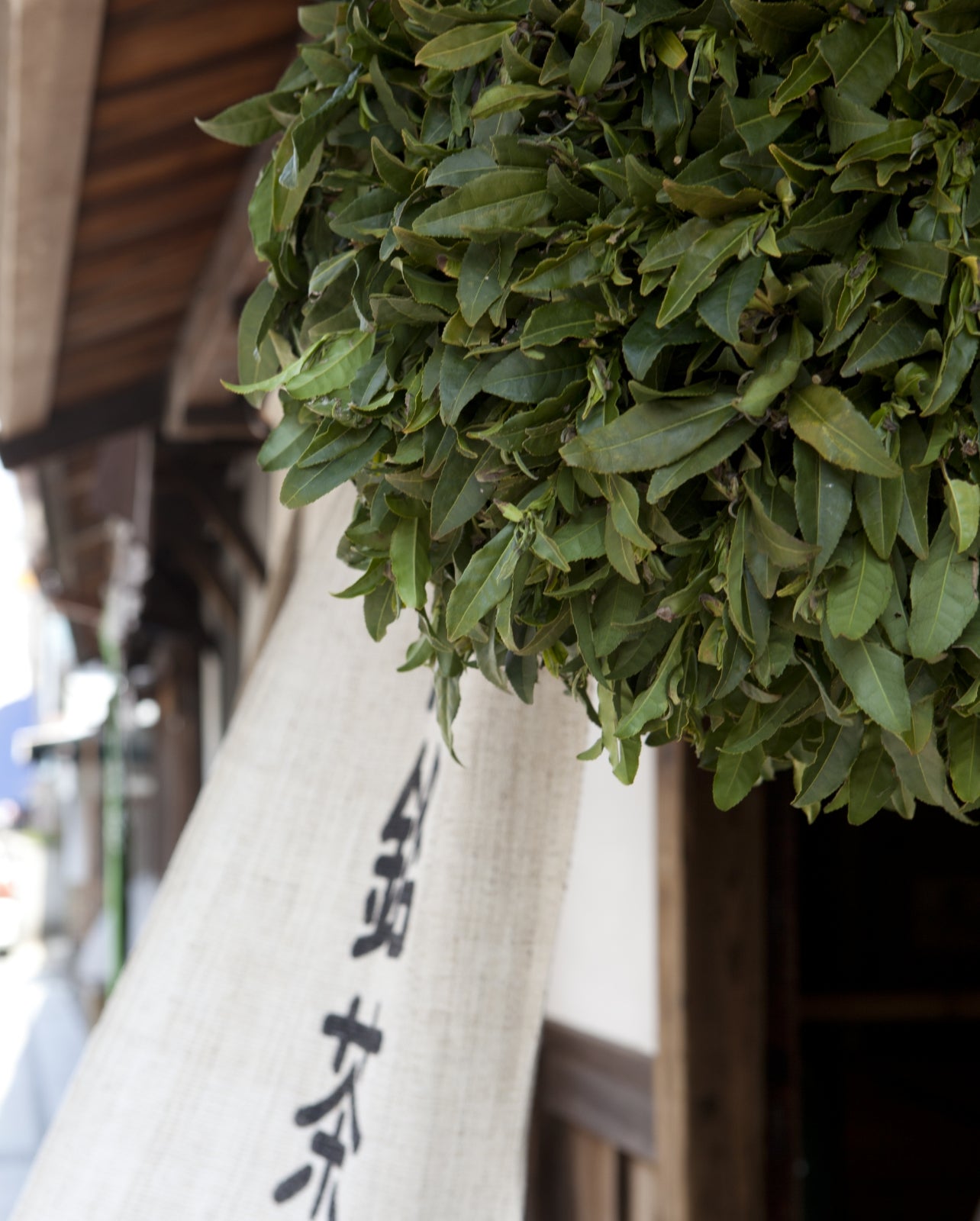Tea was first brought to Japan during the Heian period. It started when monks such as Kukai and Saicho brought back seeds from China. It is said that Myoe Shonin, a monk of Kozanji Temple in Toganoo, who was told of the seeds, ended up here in Uji while looking for a better production area. Uji is literally the hometown of Uji tea.
Uji is located south of Kyoto. 1000 years ago, Murasaki Shikibu chose Uji as the final stage of The Tale of Genji. This area was a place of prayer and healing for the aristocrats in the Heian period, and has two World Heritage Sites, Byodo-in Temple and Ujigami Shrine, creating a gentle atmosphere that is slightly different from Kyoto city. The flowing river finally provided the area with suitable humidity for growing tea.
Since Ashikaga Yoshimitsu ordered the construction of a tea garden because the morning mist rising from the Uji River was suitable for tea cultivation, Uji has been producing the highest quality Japanese tea to this day.
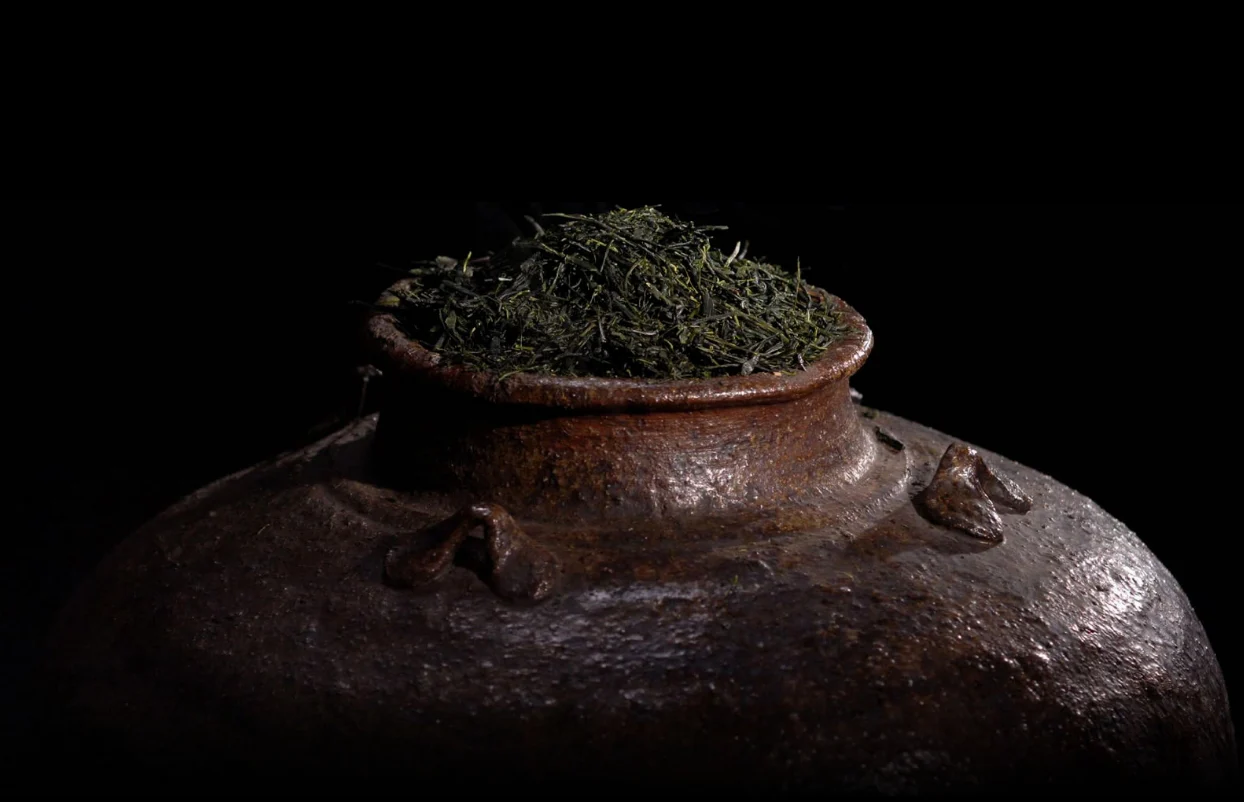
The custom of drinking tea, which began as a hobby of the upper class, spread to samurai society as a social tool, and was eventually perfected as the tea ceremony. It became the cornerstone of Japanese culture, which is based on the spirit of courtesy and hospitality. Along with numerous tea masters who left their names in history, such as Murata Juko, Takeno Joo, and Sen no Rikyu, it was the tea merchants who supported the tea culture. In particular, the existence of tea merchants in Uji, who have created new teas such as sencha and gyokuro, has made Uji tea known as a representative of Japanese tea.
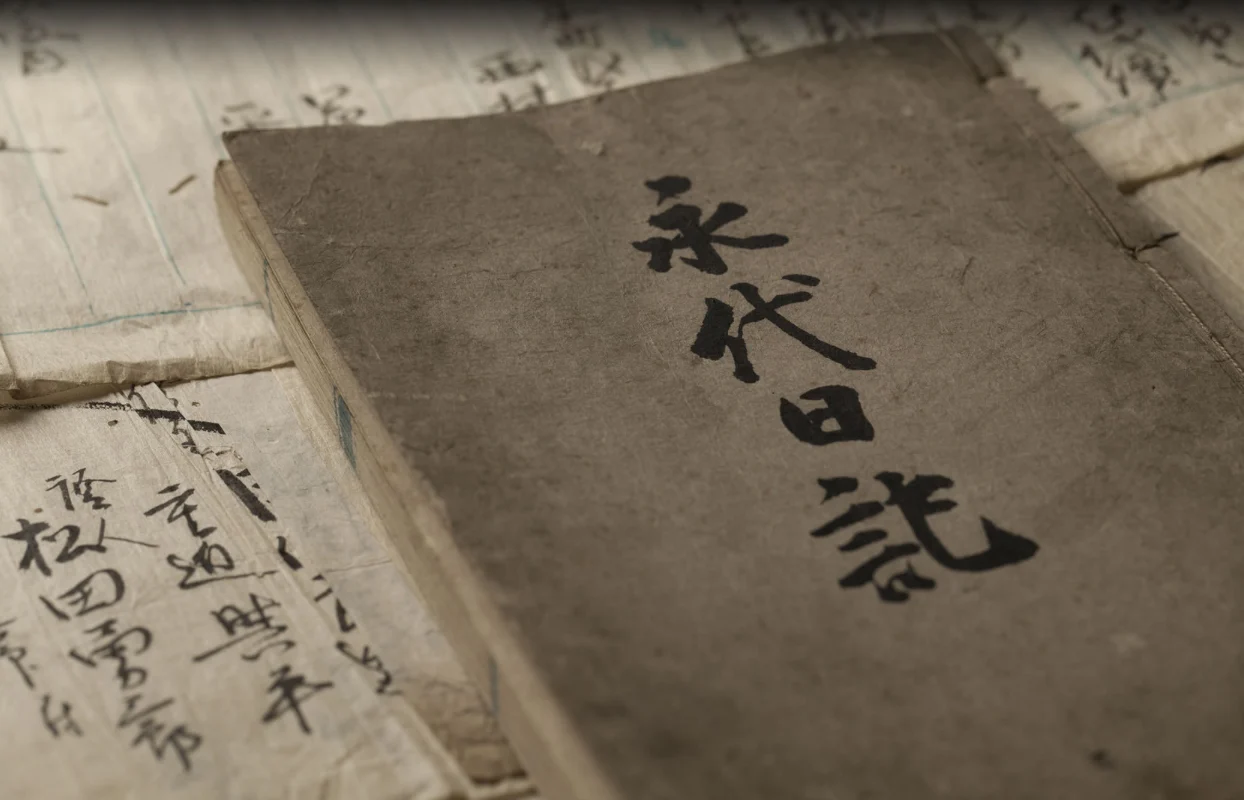
In 2012, a large number of ancient documents were found at our house, including an old book called "Eitai Nikki".
The contents of the book led to new discoveries in the history of the family, and in 2013 the history of the family was revised as follows.
Tokichi Nakamura. Its history dates back to 1819, the second year of Bunsei, when the parents of the first Tokichi Nakamura met.
Rokubei, the father of the founder Tokichi Nakamura, was born as the son of Kyubei, a sheet metal shop in Fushimi.
In the 2nd year of Bunsei, he married Tosa, the daughter of Bunemon Yamamoto, a farmer in Uji Makishima, and had five children, including Tsuru, the eldest daughter, two daughters and three sons. The fourth child (second son) named Tokichi later took the name Tokichi Nakamura and founded a tea business.
Around 1830, during the Tenpo era, Rokubei Konakamura moved to Uji, where he met Soi Hoshino, a master tea master who had a close relationship with Prince Ikeda of the Tottori domain.
What kind of connection did Rokubei, a thatched roof craftsman, have with the daimyo's personal tea master?
Perhaps it was the thatched tea room that brought them together, or maybe it was the relationship with their mother's parents' home, "Uji Makishima Farmer Yamabunemon."
From this time on, our family became deeply involved with Uji tea. After that, Fujiyoshi was apprenticed to Soi Hoshino at a young age, and soon became a servant at a young age.
ときは幕末、尊王攘夷が叫ばれ、長い鎖国の時代は終わりを告げようとしていました。安政元年、1854年、六兵衛の次男藤吉は茶商となり、中村姓を名乗って現在の本店宇治橋通六番町にて茶商「中村藤吉商店」を創業。創業から約三年間は、『星野宗以手代 中村藤吉』『丸屋藤吉』『中村藤吉』と名乗っていた時期があり、その『丸屋藤吉』をもじって現在の屋号 『まると』が誕生します。
『まると』が誕生します。
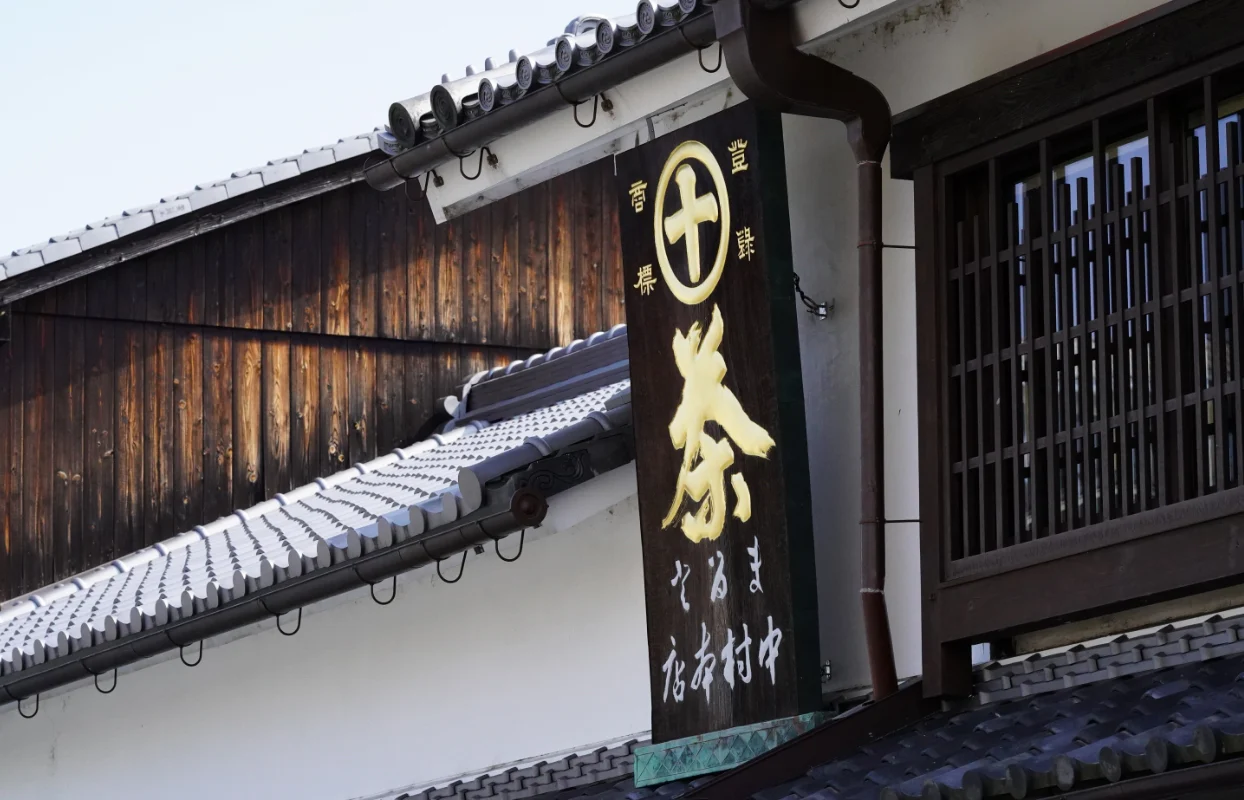
Amid the premonition of a new era, Fujiyoshi succeeded in riding the wave of the times and expanding his business.
Fujiyoshi had an older brother, Kyushichi, who was the second son and had a strong sense of independence from an early age. I had no hesitation in jumping into a new world without being bound by my family business. He was good at reading the times, the ability to connect people, and he continued to have a long relationship with the Hoshino family, where his father served. Through the Hoshino family, he opened branches in Yonago and Matsue, and the name of Tokichi Nakamura became widely known to the world.
We know that it was also involved with the Matsudaira family in Matsue from the fact that there is a "Nuresagi Lantern" favored by Harusato Matsudaira, the seventh lord of Izumo-Matsue, the tea master "Fumai-ko", on the premises of the main store. can do.
Tokichi also wrote "Tea Smoke Eihiko" given to him by Kaishu, a hero at the end of the Tokugawa shogunate. I put it up at the entrance and made it a family motto.
In 1856, Fujikichi married Mume, the eldest daughter of Sakichiemon Tanemura, the sixth head of Ujigo, and had four sons and three daughters, including Yoshitaro, the eldest son. Yoshitaro succeeded the second generation Tokichi, followed by the third generation Ukichi, the fourth generation Toji, the fifth generation Fuuya, and the current head Fujitsuka, who have devoted themselves to the tea business for about 160 years with sincerity.
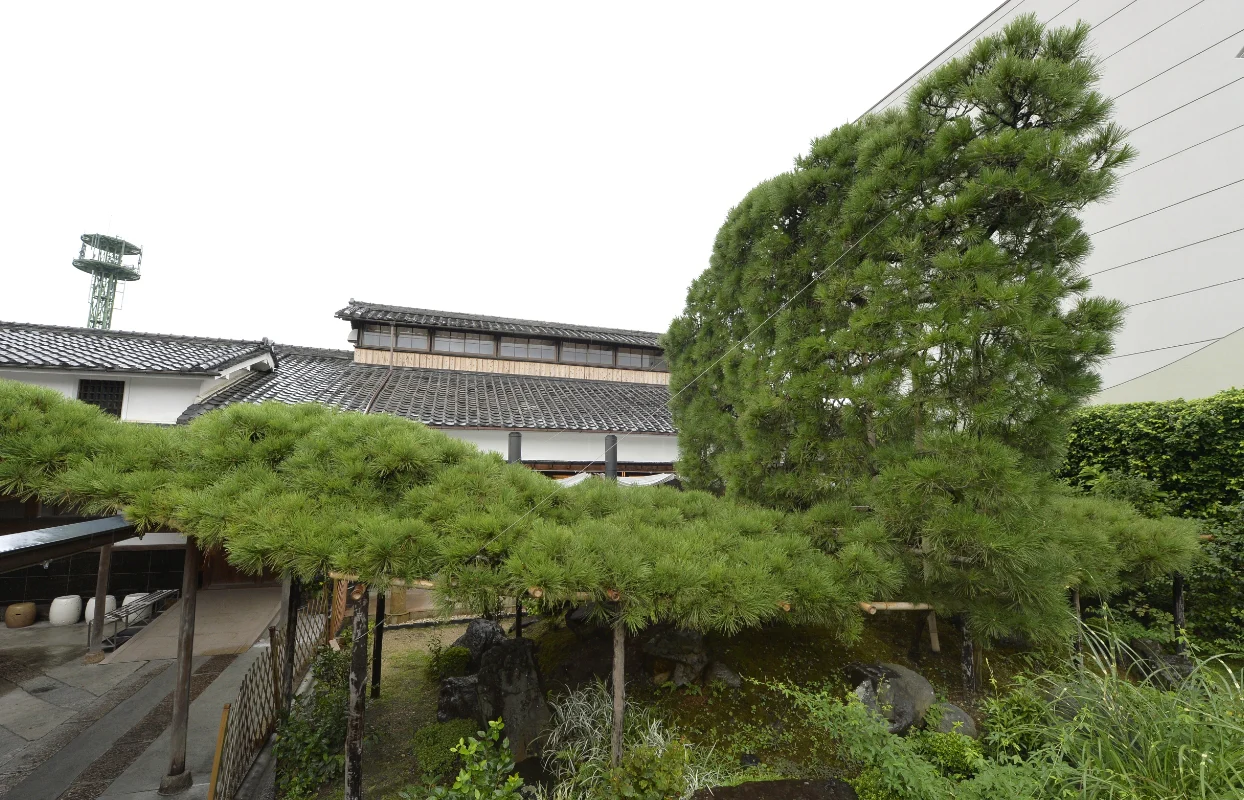
The approximately 250-year-old black pine called Horai Funamatsu in the courtyard that watches over Nakamura Tokichi's history and has been selected as one of Uji City's top 100 famous trees was planted by Tokichi II, praying for the safety of his family business. . Second-generation Tokichi had the foresight to succeed in automating the tea mill and obtained a patent. In the 4th year of Taisho (1912), and in the 3rd year of Showa (1928), when the "Emperor Showa's Grand Order" was celebrated, the family's tea was presented and purchased.
Nakamura Tokichi's famous teas, including the secret tea "Nakamura tea", have been loved for a long time beyond time.
In 2001, the tea factory was renovated into a cafe. Tokichi's desire to have more people enjoy the deliciousness of tea and its blissful moments through Uji tea and matcha sweets has come to fruition. Refined and mellow taste, sweet and refreshing aroma. Tokichi Nakamura will continue to open up the future of Uji tea as a representative tea merchant of Uji, building on its 160-year tradition to pass on the tea culture that flourished in Uji to the next generation.

In 2009, the house, which has been preserved by successive generations of family heads, was selected as an "Important Cultural Landscape" of the country as a building that conveys the appearance of a typical tea merchant in the Meiji period.




